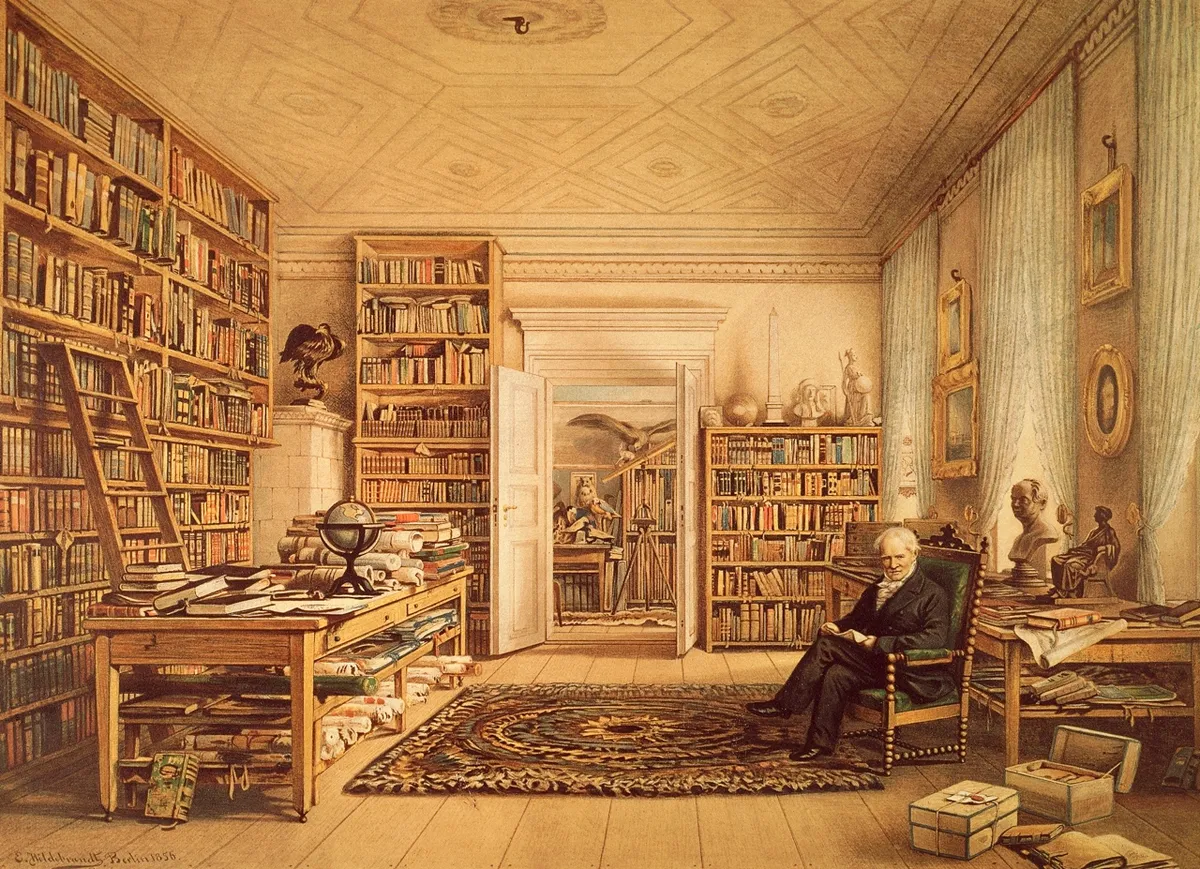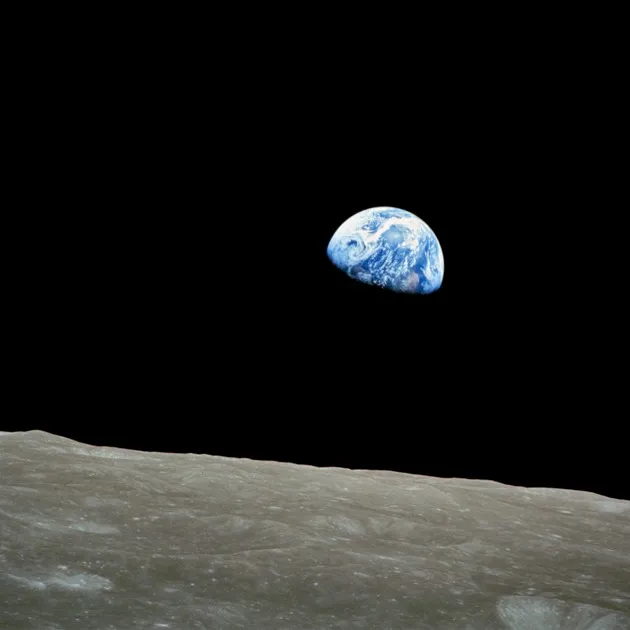Back in the early 19th Century, Alexander von Humboldt, a German naturalist and explorer, warned that humans had the power to upset the delicate balance of nature. While we are familiar with this concept today, the idea was completely radical at the time, because for centuries it had been presumed that nature was explicitly created for our benefit and use.
While trekking through the rainforests of South America, Humboldt had witnessed first-hand how human destructiveness could wreak potentially irreversible havoc with natural ecosystems and climate. And it was during his travels that he began to appreciate both the interconnectedness of life and humankind’s capacity for destroying it.
Read more great scientist profiles:
- Lise Meitner: the nuclear pioneer who escaped the Nazis
- James Clerk Maxwell: the most important physicist you probably haven't heard of
Humboldt said that nature had its own laws, and it is the duty and responsibility of humans to discover them, because otherwise we risk doing catastrophic harm. These were remarkably prescient observations, and ones which echo through to our current thinking around deforestation and climate change. Yet few people have heard of him.
Observation and imagination
Humboldt’s story reads like a romantic adventure. He braved alligators, giant spiders, jaguars and vicious insects to explore the South American jungles and savanna. He climbed the mountains of the Andes and went down into the mines of Mexico. He rode with Cossacks through the steppes of Central Asia to the Mongolian border. He met Napoleon Bonaparte (who hated him), and he befriended Thomas Jefferson and the Venezuelan revolutionary leader Simón Bolívar, liberator of northern South America from Spanish rule.
But there’s more to this story than romantic derring-do. Humboldt wanted to make sense of all he saw. With his lifelong friend, the German poet and natural philosopher Johann Wolfgang von Goethe, Humboldt shared the view that nature might be understood not as a catalogue of wonders, but as a unified whole: a puzzle that could be decoded through careful observation and measurement combined with imagination.
He was a key inspiration forCharles Darwin. “Nothing ever stimulated my zeal so much, as reading Humboldt’s [travelogue] Personal Narrative,” Darwin wrote. Darwin’s vision of nature has come to be seen as one shaped by fierce competition in the struggle for survival. Humboldt’s conception of nature, in contrast, invoked balance and harmony: an integrated whole arising from the interplay of countless elements in the living and non-living worlds.

This picture of mutual interaction and sympathy resonates today among scientists who study the way the planet works. In this grand vision, the atmosphere, oceans, land masses, deep volcanic depths, plants, animals and microscopic life all play a part. But as Humboldt warned us two centuries ago, the balance can be lost – and we can be the cause.
Strange new world
Humboldt was born in 1769 to an aristocratic family who owned an estate near Berlin in Prussia, an historical German state. His father was an army officer and a royal official, while his godfather was the future Prussian king, Friedrich Wilhelm II.
Privileged and good-looking, Humboldt was also prone to melancholy and self-doubt. He was lonely and filled with a lust for knowledge and travel. He studied economics at Hamburg and then mining in Freiberg. His family hoped he would pursue that subject as a business, but Humboldt insisted on getting his hands dirty, going down the mines to examine the minerals and geology. In the evenings he studied natural sciences, botany and electricity.
He braved alligators, giant spiders, jaguars and vicious insects to explore the South American jungles and savanna
The young Humboldt was desperate to go out and explore the world. In 1799 he and his friend, the French naturalist Aimé Bonpland, were granted passage to the Spanish colonies in the New World, and in June they set sail on the frigate Pizarro, named after the conquistador who had ruthlessly crushed the South American empire of the Incas.
Humboldt had amassed a collection of instruments: telescopes, microscopes, clocks, compasses, all carefully packed in padded cases. “My head is dizzy with joy,” he wrote. It took the two men six weeks to cross the Atlantic Ocean and land in New Andalusia, today part of Venezuela. Over the next five years Humboldt journeyed in what is now Colombia, Ecuador and Peru, as well as Mexico, Cuba and the United States.
Everything was new, strange and exciting. There were spiders that ate hummingbirds, gigantic snakes, electric eels that could shock a person to death, monkeys, toucans and gloriously plumed macaws. He and Bonpland climbed the Andes, braving precarious paths, thunderstorms and blizzards.
Read more:
- Protecting the tropical rainforests – an achievable global goal?
- Could Sir David Attenborough's new Netflix show help us save our planet?
In 1802 Humboldt ascended the volcanic Mount Chimborazo, the highest mountain in Ecuador, with its snowy peak about 6,268m above sea level. Despite suffering from altitude sickness and struggling against freezing winds, Humboldt took readings of temperature, air pressure and humidity.
In the Andes he noticed similarities with the plants and rocks of the Alps, and, looking down at the world from the high slopes, he began to sense patterns and connections in the great web of life. Here he started to develop his great vision. “Nature,” he wrote, “is a living whole.”
Nature's tapestry
The living world is a kind of tapestry, Humboldt concluded, that embraces everything from moss to macaws. He could hear it in the cacophony of animal noises that pierced the night in the rainforests, a chain reaction of cause and effect.
Humboldt felt that all of this was a contest, with survival at stake. This insight was on the brink of Darwin’s idea that competition among species is what drives evolutionary change. Nature was no Garden of Eden exquisitely designed by God. It could be a brutal place – in balance, yes, but a balance maintained only by fierce struggle.

And that equilibrium is precarious, thought Humboldt. Pull one thread and the whole tapestry might unravel. Nature’s strands are intimately woven, but humankind can undo them. Humboldt saw this particularly in the plantations around Lake Valencia in what is today northern Venezuela. The felling of trees by settlers did more than just denude the landscape.
“When forests are destroyed, the springs are entirely dried up,” he wrote. “The beds of the rivers are converted into torrents whenever great rains fall on the heights… They furrow during heavy showers the sides of the hills, bear down the loosened soil, and form those sudden inundations that devastate the country.”
Trees, soil, climate and life – it’s all connected, Humboldt realised.
The notion that humans might have a negative impact on climate and landscape wasn’t widely perceived at the time. The majority of people saw the cultivation, settlement and taming of ‘wilderness’ as an unalloyed good: an improvement on the chaos of the wild. But in fact, the effect could be devastating. In Mexico, Humboldt saw that irrigation for farming could deplete natural rivers and lakes; off the coast of Venezuela, pearl fishing had decimated oyster stocks; mining had despoiled the land.
The arrogant assumption that nature was there for us to exploit could be its undoing.
The wider view
It was a cosmic responsibility. One day, Humboldt speculated in 1801, we might travel to distant planets – and we will take our “lethal mixture of vice, arrogance and ignorance with us”. He suspected that we would leave those planets as barren and as ravaged as we have already done here on Earth.
Perhaps it was our first tentative ventures into space that finally awoke us to Humboldt’s cautionary message. His biographer Andrea Wulf thinks that the moment of change was when the Apollo 8 mission to the Moon in 1968 returned with the now iconic Earthrise image over the lunar horizon, showing our blue and white planet against the dark vastness of space. It was an epiphany akin to the one Humboldt experienced atop Mount Chimborazo.

The world needs to be experienced and understood on many scales: you must get down amidst the plants and soil with your measuring devices, but you must also seek a grand vantage point.
Today, satellites in Earth orbit provide that broader perspective. Thanks to their observations – and the work of scientists in the field – we now know that rainforests, in the Amazon basin and beyond, are one of the most threatened ecosystems in the world.
In the past 25 years alone there has been a 10 per cent decrease globally in the area of tropical rainforest due to human activities. There are also thought to be tens of thousands of plant species still undiscovered in the world’s rainforests, some of which could be sources of valuable new medicines – if they can be found before they go extinct.
We can see today how prophetic Humboldt was, because destruction of the rainforests has been shown to have consequences for the local environment and the planet as a whole. Rainforests not only help to maintain the moist climate that supports such a bountiful variety of life, but they’re also vital to the regulation of the Earth’s climate.

As they grow, tropical rainforests absorb large quantities of the greenhouse gas carbon dioxide from the atmosphere. Collectively, they suck up around 2.4 billion tonnes of carbon each year; the Amazon rainforests alone are responsible for absorbing a quarter of that. But a 2015 study found that on average, Amazon forests absorb carbon today at a rate at least one-third lower than they did in the 1990s. This seems to be due to a greater rate of tree death, partly because of the serious droughts of 2005 and 2010 but also because the higher carbon dioxide concentration in the air encourages trees to grow faster but less robustly. And that’s before we even take into account the loss of carbon uptake because of deforestation itself. If the rainforests suffer, we all suffer.
A final chapter
As for Humboldt, he didn’t stop with the Americas. After establishing himself as one of the most distinguished German scientists of his age, in 1829 he embarked on another daring and perilous expedition: across Russia and Central Asia, through Siberia and all the way to the Mongolian border. Humboldt was then 59 years old, but he astonished his retinue with his vitality, climbing mountains and crawling into caves. He returned with more plants, rocks, measurements – and ideas.
In the later years of his life, he put them all together in a grand synthesis, a work called Kosmos that sprawled over five volumes and gave an account of all of creation, from the stars and planets to volcanoes, auroras, rocks, plants, insects and algae. Nothing like it had been attempted before, and it inspired generations of scientists, artists and writers.
Kosmos spoke about nature as a “living whole”, and a “wonderful web of organic life”. And nowhere in this work, astonishingly for the time, did Humboldt feel the need to mention God. With so much to wonder at in nature itself, all part of a rational and comprehensible scheme of organisation, perhaps it began to seem that creation was more awe-inspiring, more worthy of devotion, than the notion of a creator.
When Darwin wrote that “there is grandeur in this view of life,” he wasn’t just talking about evolution by natural selection, but about the rich interplay of a planet and its inhabitants that Humboldt had identified. Preserving those riches is now down to us. If we fail, it will not just be a breakdown of planetary responsibility and of rational self-interest. It will also be a failure of imagination.
- This is an extract from issue 313ofBBC Focus magazine -subscribeand get the latest issue delivered straight to your door.
Follow Science Focus onTwitter,Facebook, Instagramand Flipboard

